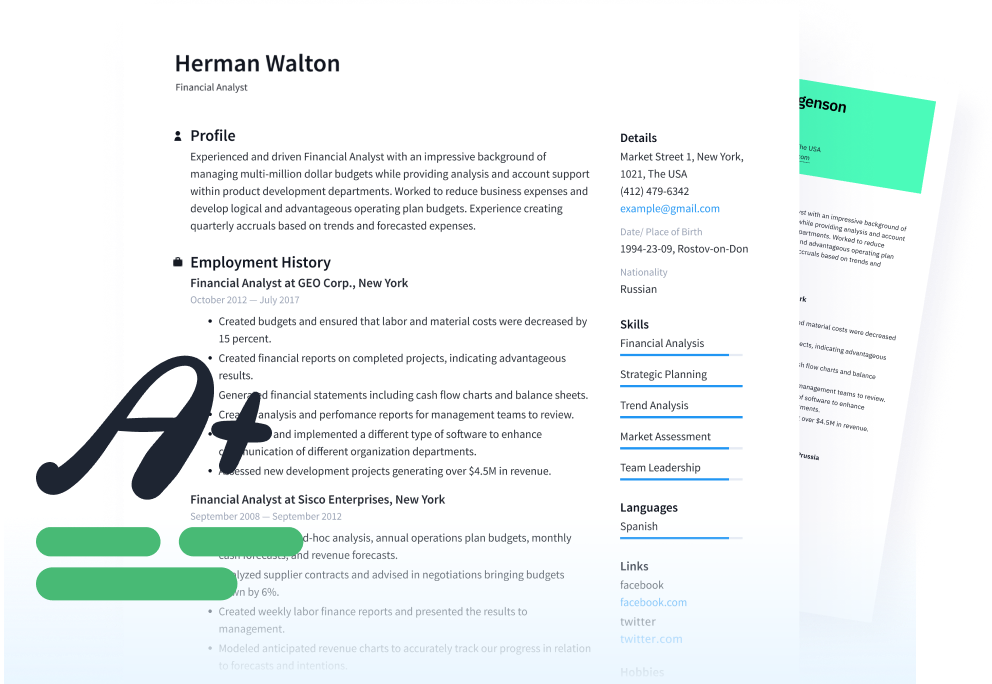Ask Amanda: How Can I Make My Resume Beat the Applicant Tracking System?
Get a Free Expert Review4 min read. Updated on November 07, 2024
Table of contents
Table of contents
Table of contents
Table of contents
Q: How can I write a resume to beat the applicant tracking system?
Applicant tracking systems — or ATS, for short — are used during the recruiting process to store, scan, and rank job applications for a company. What started as a recruiting tool for very large corporations has turned into a common recruitment solution for employers of all shapes and sizes.
Applicant tracking systems are often most effective at eliminating the least qualified candidates from the running, rather than cherrypicking the best candidates for the job. However, if a job seeker's resume isn't written with the ATS in mind, even a qualified candidate can find his or her job application knocked out of the running and into the infamous resume black hole.
To make sure your resume is ATS-friendly, follow these tips below:
Keywords are key
When you submit your resume through an ATS, it stores your application as an entry in its database. Recruiters can then go into the ATS and search for those applicants whose resumes contain keywords related to their job opening, such as a specific skill or experience.
It's incredibly important that you pepper in the right keywords throughout your resume if you want your application to show up on the recruiter's list of possible candidates. If you're unsure which resume keywords to include in your resume, start by reviewing the job descriptions for what you're applying for and identifying the terms that routinely pop up in these job listings.
Also, take note of how they define the position, its responsibilities, and the core requirements for the role. If you possess those qualifications, be sure to incorporate that language, as it appears in the job listing, to the appropriate sections of your resume.
While you shouldn't completely overhaul your resume for every job submission, it is important to make small tweaks to the language to match the job listing.
[[CTA]]Related: How to Customize Your Resume for Each Job Application[[/CTA]]
You can find out what keywords your resume is currently ranking for by submitting it for a free critique at TopResume. We not only provide objective feedback about your resume's content, structure, and design, but we also show you what the ATS believes your top skills and experience to be. If the information in the ATS portion of your critique does not accurately describe you as a professional and recognize the top skills you possess, then you know your resume needs some work before it's ready to pass the robots.
Don't get too fancy. Less is more
Don't use graphics, tables, or columns in your resume. While these may look nice to the human eye, they become garbled messes or get completely left out of your application after passing through the applicant tracking system. For instance, if you insert an image or chart to list your key skills, the ATS will not be able to read it. If you use a cool graphic to insert your name into your application, this piece of information will appear missing from your application once the ATS is through with it.
Don't put information, such as your contact details, into the header or footer of your resume document. In fact, avoid putting information in these sections in general. Many applicant tracking systems cannot read the information in headers, so this information will get left out of your application.
You're much better off sticking to a simple, clean design if you want your application to pass through the ATS without issue. Less is truly more when it comes to your resume format.
To get a sense of how your formatted resume will render after going through an ATS, save the document as plain text and read the result. If the plain text version is missing important information, has some of its characters saved incorrectly, or looks disorganized, then it's time to reformat.
Free Resume Review
Ensure your resume aligns with what employers are actually searching for.

Beware of PDFs
When applying for a job through an ATS, submit your resume as a Microsoft Word file, rather than a PDF file. While PDF files are great because they ensure the format of your resume remains unchanged, many applicant tracking systems can't convert the file to extract the text from your resume. As a result, your resume file may be deemed “unusable” and then discarded.
Save the PDF file format for when you're emailing your resume to a friend or reference or planning to print out a copy on the fly. And always have a Word or plain-text version also saved to the cloud so you can submit your application on the go.
Read
Recommended Reading:
Amanda Augustine is the resident career expert for Career.io's suite of brands: TopResume, TopInterview, and TopCV. Since 2015, Amanda Augustine has served as the resident career expert for TopResume, the world’s largest resume-writing service. An internationally recognized authority on career advancement, she specializes in everything from building a strong professional brand to mastering the job interview. A Certified Professional Career Coach (CPCC) and Certified Professional Resume Writer (CPRW), Amanda has spent more than 20 years helping professionals enhance their careers and land the right job faster. Follow Amanda on LinkedIn, Facebook, X, and Instagram for her latest career advice.
See how your resume stacks up

Related Articles
Take the first step in your career today